I tested Samsung’s QN900C, and I’m now finally a fan of 8K
Samsung more than any other TV brand is closely associated with 8K. That’s because the company has been championing the format for years, even as true 8K content continues to be a rarity in the streaming ecosystem (you can find it on YouTube, primarily). There are two new 8K series in Samsung’s Neo QLED lineup for 2023, the QN900C and the QN800C, both of which use a mini-LED backlight with up to 1,000 local dimming zones combined with a Quantum Dot layer for enhanced color and brightness.
The Samsung QN900B model that we tested in 2022 earned a 4.5 star rating and ranks at the top of our best 8K TVs guide. It seems that each year brings improvements to the company’s Neural Quantum Processor 8K, a feature that upscales 4K and lower-resolution images to 8K-res, so I was eager to see it in action on the new QN900C. Samsung made that model available in a 75-inch screen size during a recent hands-on opportunity at its New Jersey facility, where I was given enough time to run a suite of tests and to marvel at the TV’s expansive 8K picture.
There’s more to say about watching 8K on Samsung’s TV, but let’s first cover the basics. The QN900C is available now in 65-, 75-, and 85-inch screen sizes, with the 75-inch model I tested priced at $6,299 / €8000 / around £5,520. It provides 4 HDMI 2.1 ports with support for up to 144Hz refresh rates, along with VRR, FreeSync Premium Pro, and Nvidia G-Sync.
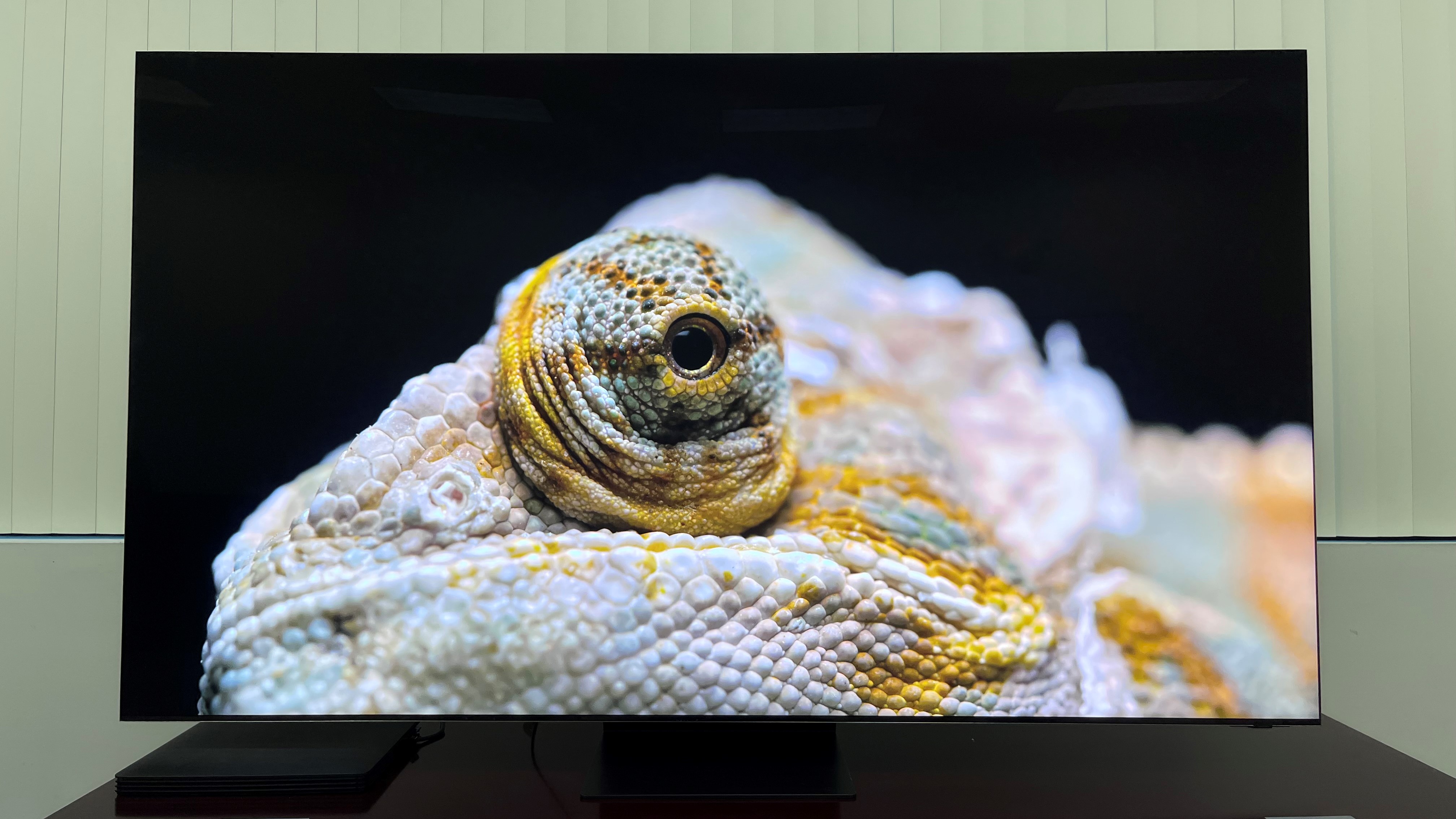
The QN900C’s Quantum Matrix Ultimate backlight technology uses 14-bit processing, while its Neural Quantum 8K processor employs machine learning to enhance both video and audio performance. An Auto HDR Remastering feature optimizes standard-definition content by adding HDR10+ tone mapping on a scene-by-scene basis. The QN900C also has Samsung’s Anti-Glare screen, and its Ultra Viewing Angle feature improves picture quality for those viewing at far off-center seats.
Samsung’s 8K TV is fairly stocked audio-wise, with a 6.2.4-channel built-in speaker system powered by 90 total watts. It has Object Tracking Sound Plus to enhance the directionality of sound effects, and Q-Symphony 3.0, which can combine the TV’s speakers with a compatible Samsung soundbar for an expanded audio presentation.
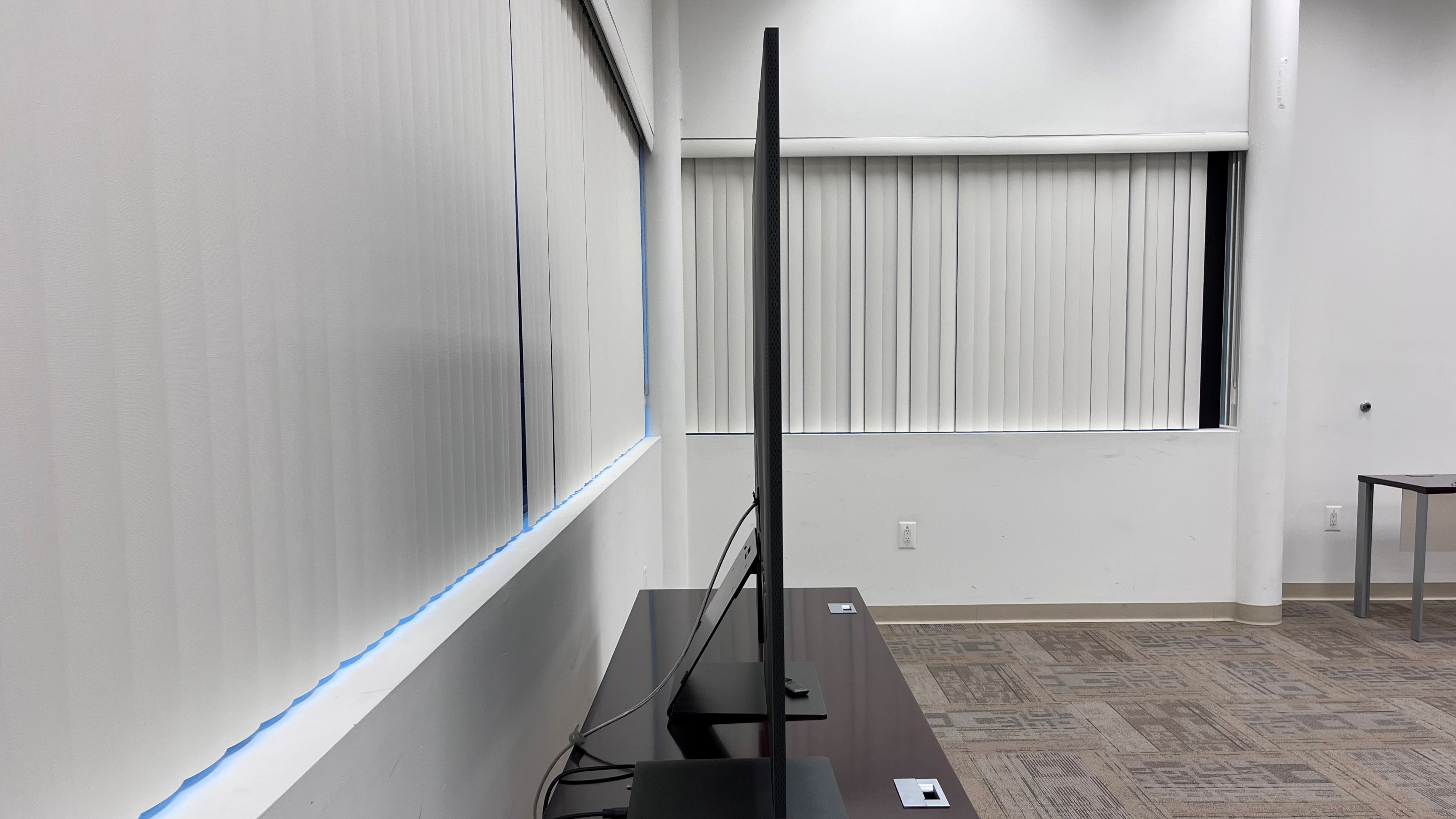
The QN900C’s Infinity Screen design uses a vanishingly thin bezel to give the picture a “floating in space” look. A sturdy metal center-mounted stand is included, and a Slim One Connect box is used for inputs and hooks up to the TV via a separate cable. Along with the One Connect’s quartet of HDMI 2.1 ports (including one with HDMI eARC) there’s an optical digital audio output and an RF input to connect one of the best indoor TV antennas and use the TV’s ATSC 3.0 digital TV tuner.
Samsung’s Smart Hub interface hasn’t been altered much visually for 2023, though the QN900C and QN800C get a new portal that highlights 8K content on YouTube. You can also purchase and download 8K NFT artwork from the company’s partners including Nifty Gateway, La Collection, Art Token, and Savage for displaying in the set’s Ambient mode. Samsung’s Game Hub acts as a central area to access cloud games from Xbox, Nvidia GeForce NOW, Amazon Luna, Utomik, and more, and wireless casting from a compatible device such as a Samsung phone or tablet is supported.
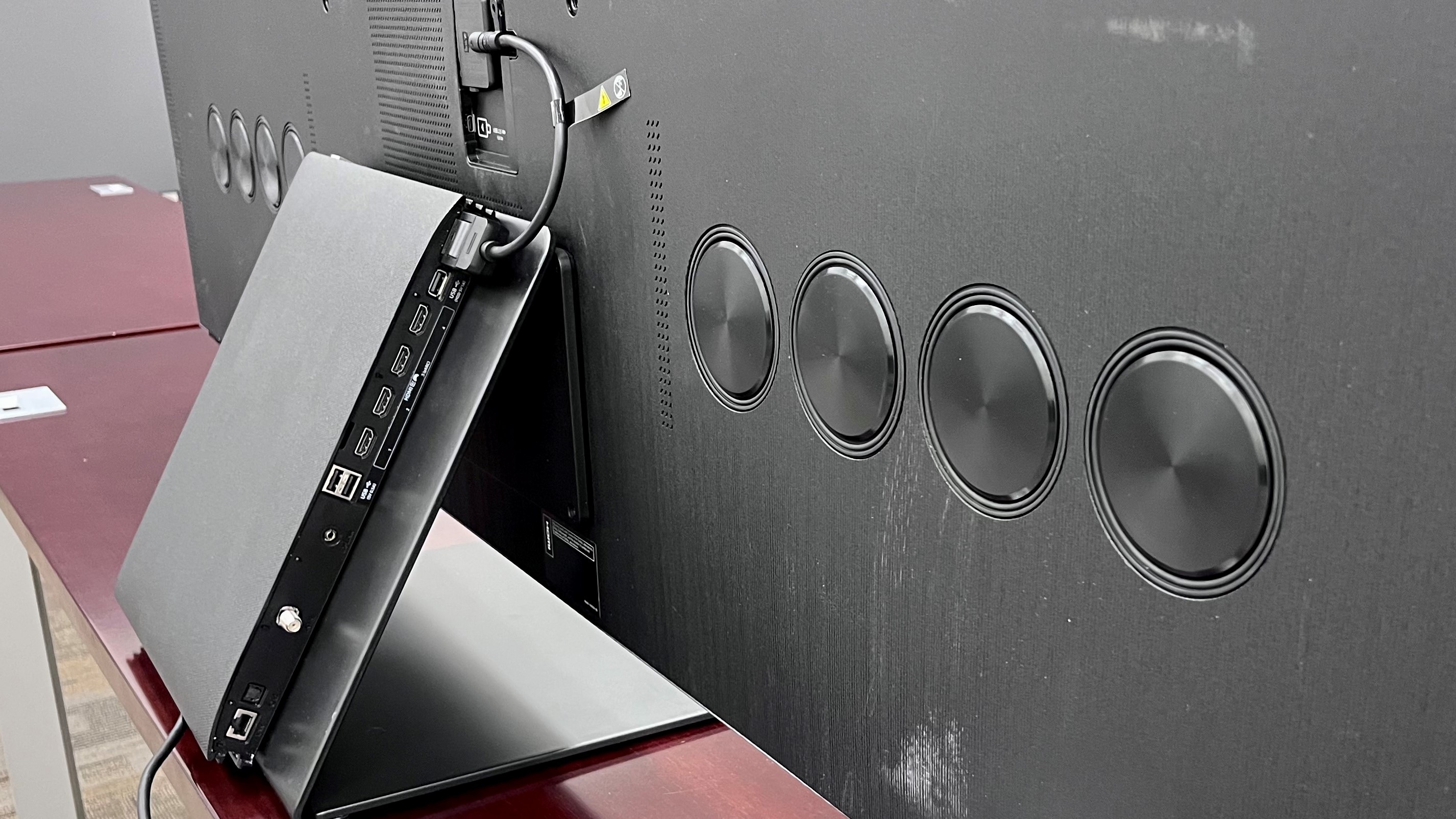
Bright as bright can be
I started out my hands-on evaluation of the QN900C by viewing test patterns from the Spears & Munsil UHD HDR Benchmark disc. Screen uniformity was excellent, with both full-screen white and darker gray patterns appearing pure and unblemished. The TV’s Ultra Viewing Angle feature also ensured that images retained brightness and contrast at off-center seats. Other patterns from that disc showed black clipping (with the visual consequence of deep shadow details becoming buried), while the video montage section revealed a degree of backlight blooming.
Peak HDR light output measured on a 10% window pattern in Filmmaker mode was an impressive 2,433 nits. That’s a better result than the approximately 2,000 nits we measured in the same mode on Samsung’s 2022 flagship S95B 4K TV, and enough brightness to not just let you comfortably watch in bright rooms with overhead lights on (something the TV’s anti-glare screen will help with) but extract all the highlight detail from the bulk of 4K HDR shows and movies.
The QN900C’s UHD-P3 color gamut coverage in Filmmaker mode was 93% and its BT.2020 coverage 69.5%. Samsung’s S95C OLED, which I also tested during my hands-on session, outperformed the company’s 8K Neo QLED on both fronts here, though I can’t say I was disappointed in the set’s color rendition when viewing regular programs. Input lag in Game mode was 9.7ms, an excellent result that ranks the QN900C among the best gaming TVs available today.
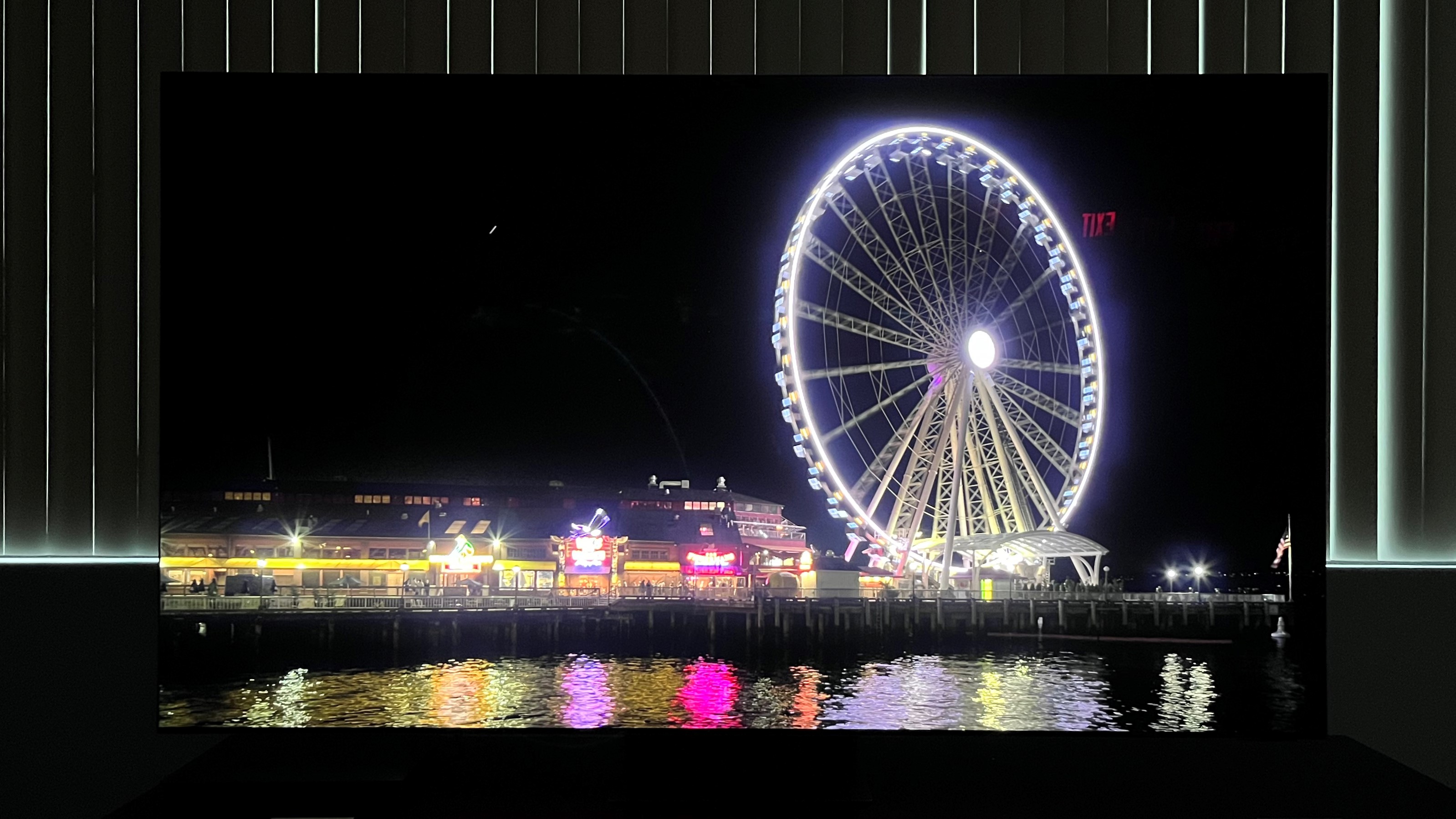
Checking out some of my favorite reference 4K Blu-ray discs, the QN900C showed a fair degree of judder in a scene from No Time to Die where a camera pans slowly across a rocky, rough hillside. When I tested the S95C OLED during the same session, this scene looked cleaner and more stable, with the QN900C’s handling of it more akin to what I remember seeing when I did a hands-on review of the company’s QN90B Neo QLED model back in 2022.
Watching Dune also reminded me of that same QN90B hands-on test, with a degree of background noise visible in a scene following Paul’s testing by the Bene Gesserit Reverend Mother. It was fainter on the QN900C, however, though I found it to be barely visible at all on the S95C when watching the same scene.
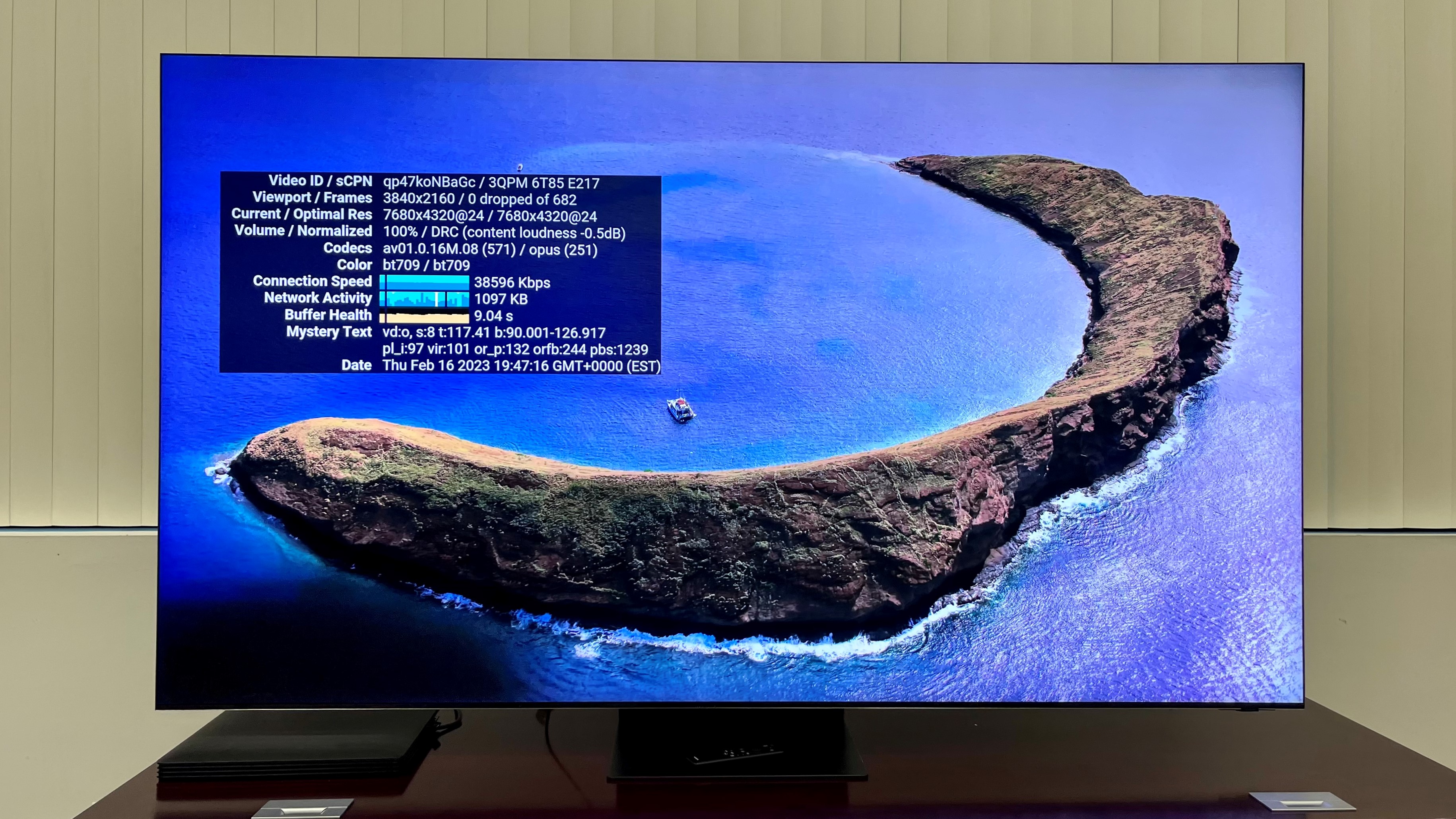
Exquisitely detailed
I’ll admit to having been an 8K TV doubter in the past, with the lack of 8K content and the already very satisfying picture detail served up by 4K TVs, even at enormous screen sizes, being my two main points of contention. Also, I had looked at 8K TVs up close, and the image processing that some had used to upconvert pictures to the higher-resolution format appeared to be very much a work in progress.
But after spending quality time with the QN900C, my view of 8K TVs has changed. The set’s screen was bursting with detail, and it looked better than the S95C OLED and QN95C Neo QLED (hands-on review in the works) models I had evaluated the same day in that respect. And there was nothing enhanced or fake-looking about the QN900C’s upconverted 4K image, which literally had a three-dimensional quality. To be honest, when I streamed actual 8K footage from YouTube, it didn’t look as good as upconverted 4K on Samsung’s TV.
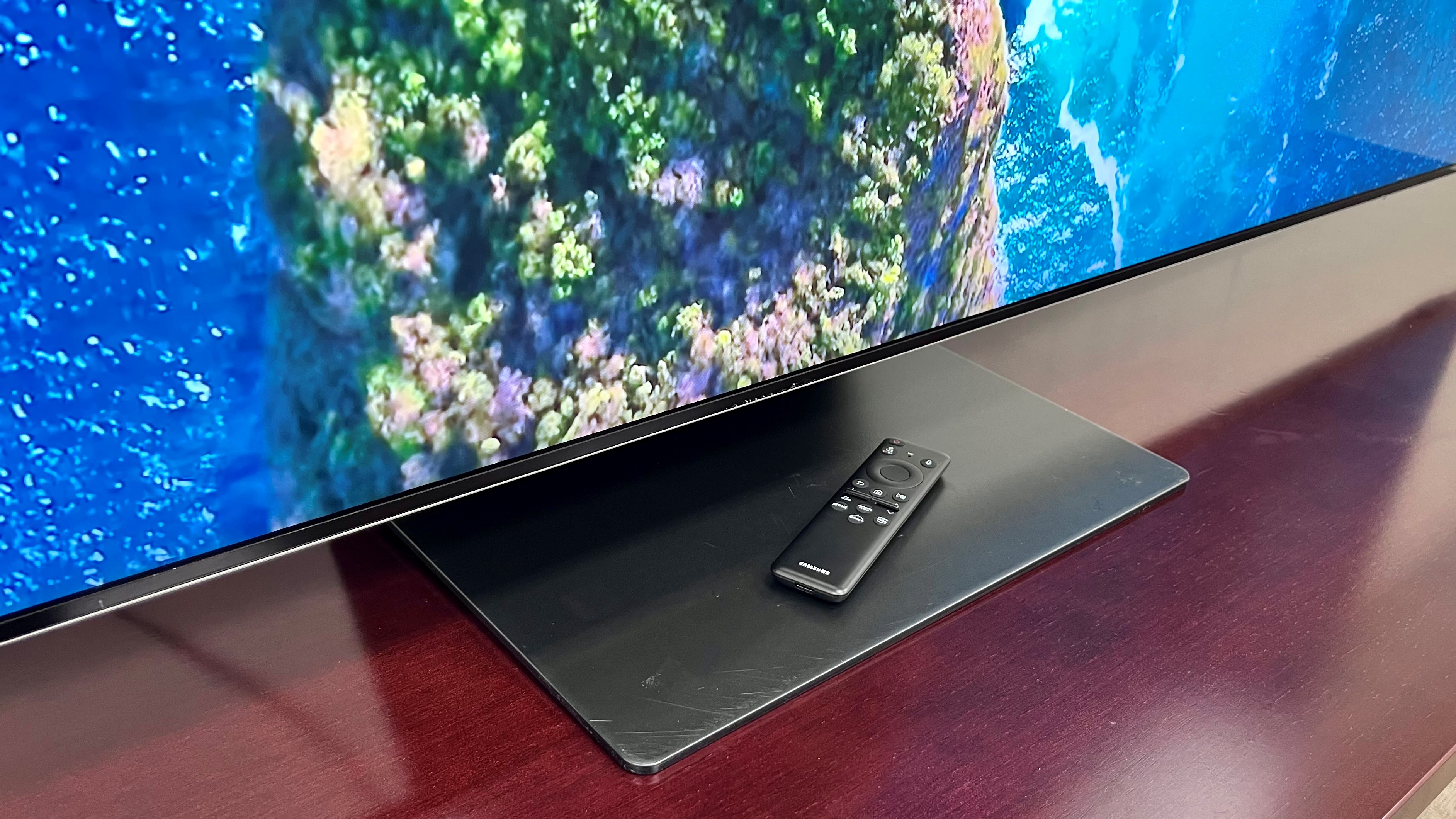
Having spent hands-on time with Samsung’s flagship 8K TV, I can’t say it’s the same perfect all-around package as what I found the company’s new S95C OLED to be, but there’s still plenty to recommend it. Specifically, Samsung’s upconversion of 4K content has reached a level of refinement that, for me, finally makes 8K TVs a viable proposition. There were many moments while viewing when I silently uttered “wow,” and that’s certainly not something I find myself doing with every TV I test.
0 comments:
Post a Comment